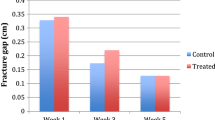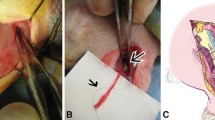Abstract
Freeze-dried human bone allograft is used clinically as an adjunct to autologous bone graft. When freeze-dried human bone allograft is demineralized, the allograft is osteoinductive, since it causes bone to form heterotopically. Both types of allograft are also used alone, such as in spinal fusions, critical size defects, and periodontal therapy. The purpose of this study was to determine the effect of demineralization on the osteoinductive potential of human bone grafts obtained from two different groups of patients. One group consisted of six patients younger than 42 years of age, while the other group consisted of six patients who were older than 70 years of age. The harvested material was lyophilized and divided into two portions, one of which was used directly while the other was demineralized. Osteoinductive ability was established using an in vivo assay for heterotopic bone formation. Activity in these bone grafts was compared with a batch of commercially prepared demineralized, freeze-dried human bone grafts that had been previously shown to be active and another batch that had been shown to display low (‘inactive’) osteoinductive ability. A bone induction score was determined for each group of grafts based on the number and size of any ossicles formed. In addition, the area of new bone formation and area of residual particles were determined histomorphometrically. Tissue response to the bone grafts varied with donor age and whether the samples had been demineralized or not. Only demineralized, freeze-dried bone graft from patients younger than 42 years of age was osteoinductive; all other batches displayed little or no osteoinductive activity. In the demineralized, freeze-dried bone from donors younger than 42 years of age, the bone induction score and new bone area were significantly higher than in the other batches of bone graft, and the area of residual particles was reduced. Both demineralized and nondemineralized bone graft from patients older than 70 years of age were encapsulated in dense, fibrous connective tissue. These results may help explain the observed differences in clinical outcome when demineralized, freeze-dried bone graft or nondemineralized, freeze-dried bone graft from different donors is used in bone regeneration applications.
Similar content being viewed by others
Author information
Authors and Affiliations
Additional information
Received: 8 December 2000
Rights and permissions
About this article
Cite this article
Lohmann, C., Andreacchio, D., Köster, G. et al. Tissue response and osteoinduction of human bone grafts in vivo. Arch Orth Traum Surg 121, 583–590 (2001). https://doi.org/10.1007/s004020100291
Issue Date:
DOI: https://doi.org/10.1007/s004020100291




